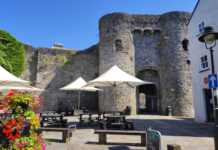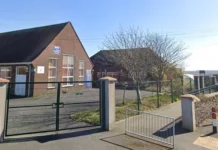Proposed Co-Interview with: Will Wilson, the Operations Manager for London’s Rescue and Response County Lines Project and Gary Pettengell is Founder & CEO of ECINS– Empowering Communities through Integrated Network Systems, specialist supporting organizations worldwide to improve the lives of vulnerable people and empower the practitioners who serve them.
Story Background:
In a new approach, Rescue and Response, a London-based project supporting youth affected by county lines exploitation, partnered in the UK with ECINS to deploy a new methodology as the standard by working with a multi-agency collaboration approach.
Arrests of teenagers for drug dealing have reached record highs in the UK, attracting national attention as children as young as twelve are arrested for serious crimes, including drug possession with intent to supply.
– Between 2013 – 2017, the number of minors arrested increased by 28 percent even as the number of overall drug-related arrests decreased in the UK. This troubling trend is attributed to a “county lines” approach deployed by gangs and organized criminal networks who recruit and enslave minors who are used to transport illegal drugs across police and local boundaries. These human trafficking victims are hard to identify and even more difficult to track.
– By 2020, more than 1,100 children in the UK were trafficked in the drug trade. Despite increasing public attention, including a documentary film, “County Lines,” human support networks, public safety officers, and legislatures have struggled to implement sufficient solutions that adequately address the problem’s scope and severity.
– To be sure, the challenges are multifaceted. As Emily ver der Lely, a director for a British crime-fighting charity, told Reuters, “Sadly, county lines is often glamorised on social media, missing out the violence, exploitation and debt that many young and vulnerable people experience.”
– To date, a highly localized approach to child trafficking has struggled to adapt to the county lines tactics. Borough by borough responses let people fall through the cracks.
Any effective solution requires communication, collaboration, and intervention across numerous nonprofits, public safety departments, and other support services.
● We need to work more commonly in this joint approach where our systems interlink or we will forever be reacting to the problem rather than preventing the problem.
● Currently we are pulling people out of the river downstream, but these young people are replaceable by criminal organizations. Unless we act to understand who might be the next victim by using analytical resources, we will always be behind the problem.
In other words, rescuing existing and preventing future victims of human trafficking requires a response that accounts for more than just anti-drug operations.
● We are trying to get ahead of the curve so we know what makes vulnerable children vulnerable to exploitation. We know violence in the home, exclusion from school, substance misuse, a parent in prison, and other factors present an opportunity for early detection.”
These challenges are amplified by the county lines arrangement. Young trafficking victims in one locale are viewed as criminals in another, making it more difficult to rescue victims and target the criminal enterprises responsible for the drug trade and human trafficking operations.
● Even nationally, the police forces in England don’t synch up. We are setting an example of best practice, and we could work much more preventatively if more people worked this way.
For instance, London Rescue and Response implemented a pan London approach that integrated case files, police records, and social service information into a data collective that created an accurate picture of what child exploitation looks like and the unique risk factors that make youths more likely to be trafficked.
● For example, a one front door approach created comprehensive data that tracks trends across the UK, identifying those at risk for violence, exploitation, debt bondage from lost drugs, and other risk factors.
Conclusion: This discussion will present a model and methodology that is replicable globally. When nonprofits, social services departments, and law enforcement professionals can onboard victims into a shared database that catalogs a variety of risk factors and informs contextualized response
Help keep news FREE for our readers
Supporting your local community newspaper/online news outlet is crucial now more than ever. If you believe in independent journalism, then consider making a valuable contribution by making a one-time or monthly donation. We operate in rural areas where providing unbiased news can be challenging. Read More About Supporting The West Wales Chronicle

























